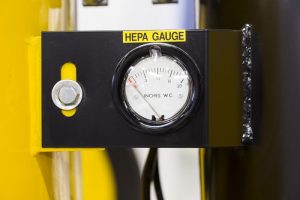Whether it is the heat treating process, vacuum pump technology or vacuum brazing, the pressure gauge is the critical component used for measuring sub-atmospheric pressure. Before we move ahead, let’s know what the vacuum is? Generally, most of the people think that vacuum means the absence of air. Although it can be true to some extent, the real meaning of vacuum of space is that the pressure of the gas in the given space is less than the atmospheric pressure.
There are various uses of vacuum gauge which analyses the pressure change and is used for several applications. Machinery used in factory outlet mostly comprises of the basic component called pressure gauge that ensures the effective operation of it. Whether it is the automobile operation or engine setup, it can be used in varieties of ways.
How Vacuum Gauge Ensures Effective Production Activities?
Apart from just analysing the differences in pressure change, vacuum gauge is used for controlling several aspects of an engine, bad coils, plug wires or bad spark plugs pretty easily. Indications or the change in the pressure shown by the gauge is due to some of the changes in the inner chamber. Well, each machine has its pressure requirement. Accordingly, it is designed as per different pressure range.
- Suitable measuring devices for low vacuum gauge range are Bourdon tubes, capacitance sensors, active strain gauges and bellows.
- Consequently, for mid pressure range, typically between 10^+1 and 10^-3 torr, different devices are used like capacitance monometer. However, for an accurate measurement, Pirani type or thermocouple gauges can be used.
- For the high-pressure range in the vacuum gauge, typically between 10^-3 to 10^-6 torr, two different devices are used which is either Bayard-Alpert hot cathode gauge or cold cathode both requiring different calibration. These two devices are also used for an ultra high-pressure range which is below 10^-6 torr.
Just reading the range without knowing its importance might prove futile. To know the location and exact engine performance, one should have appropriate knowledge of needle reading in vacuum gauge.
1. For normal engine operation
In an ideal speed, at a sea level, an engine should show a steady reading in the vacuum which is between 14 and 22 in. Hg. The throttle should be opened and closed quickly which would lead to a drop of vacuum below 5 in. Hg, it is further rebound to 23 in. Hg.
2. Sticking valves
When the engine is idle and fluctuation of approx 1 to 2 inches is continuous, it indicates ignition issues. If you witness such fluctuations, thoroughly check the high tension cables, spark-plug gap, ignition coil or distributor cap and primary ignition circuit. However, if the fluctuation is approx 3 to 4 inches, it indicates issues of sticking valves.
3. Low compression, intake system leakage
If the reading in the vacuum gauge is quite lower than the normal one, it indicates leakage in vacuum modulator, through vacuum gaskets, carburettor gaskets. The only leakage is not the issue behind the low reading. It can also be caused due to worn out piston rings or late valve timing.
4. Cylinder head gasket leakage
In normal engine working, if there is any leakage, the reading falls gradually with a steady reading of 10 to 12 in. Hg. However, if the leakage is between the two cylinders, this drop in reading will be much greater. Through the compression test, the leaking location can be determined easily.
Above is provided with an idea of the working of vacuum gauge but the operation of the equipment is possible after a time span of training.

